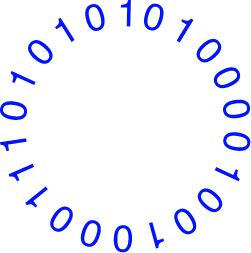To view the original article, please click here.
The number of “no code” A.I. platforms, software that allows people without specialized skills to build algorithms, is proliferating rapidly.
The companies that market no-code machine learning platforms include Akkio, Obviously.ai, DataRobot, Levity, Clarifai, Teachable Machines, Lobe (which Microsoft bought in 2018), Peltarion and Veritone, to name a few. They allow non-A.I. experts to create A.I. systems using simple visual interfaces or drag-and-drop menus. Some of the software is designed specifically for computer vision, some for natural language processing, and some for both.
The latest to enter the no-code fray is Primer, a San Francisco company that I’ve mentioned before in this newsletter. Primer’s evolution is worth mentioning because it is probably instructive of where the entire A.I. software-space may be headed. To date, Primer has been known as a leader in creating A.I. software that helps analysts—those who work for government intelligence agencies, as well as the kind who work for banks and for companies in departments like business development and marketing—rapidly sift through vast quantities of news and documents. To achieve this, the company has used some of the most state-of-the-art natural language processing techniques.
But as Sean Gourley, Primer’s chief executive officer, explains, as good as Primer’s natural language processing software is, many of its customers want something bespoke: “Our big Fortune 50 companies and big national security customers kept saying the models are great but can I make it do the thing I want it to do?”
Gourley says that Primer came to realize that each customer wanted to train NLP software to do slightly different things. And they also came to realize, he says, that customers would not just want to deploy a few dozen different models, but potentially thousands of pieces of A.I. software. The only way to do that, Gourley says, was to find a way to let the customer to design and create own algorithms.
So Primer has developed a no-code platform it calls Automate. It allows a non-expert to take data from something like a Microsoft Excel spreadsheet and, in about 20 minutes, train an A.I. system to perform some key NLP tasks at accuracies that can approach human-level.
The first task Primer has focused on with Automate is what’s called “named entity recognition”—identifying mentions of proper nouns in documents. That sounds simple, but it isn’t. And it is an important building block for a decision-making chain that allows Primer’s customers to do things like track terrorist activity or keep tabs on a competitor’s pricing. It can also be used to, for instance, build a tool that will let a company monitor its social media feeds for customers who need attention, says Andrea Butkovic, the product manager in charge of Automate.
Because the system works by essentially fine-tuning a powerful pre-trained A.I. algorithm for a customer’s specific needs, it can start producing good results with just about 10 to 20 examples, she says. And it is designed for what’s called “active learning,” meaning the A.I. system gets progressively more accurate with each new example it is given. This is especially true if human experts curate the examples so that they are the most instructive—exposing the system to those tricky edge cases that require human expertise to classify. “With active learning, you can need 30 times less data to get the same model performance,” Gourley says.
Primer plans to give Automate’s customers analytic tools to help them determine how good the A.I. system they’ve built is. They’ll also help them find any examples in the training data may be incorrectly labelled—a common problem that can hurt how well the software performs.
Gourley says so far Automate is good for doing binary classification tasks. But Primer plans to add the ability to do more complex document sorting in the near future, as well as tasks like figuring out the relationship between entities in documents and summarizing documents. John Bohannon, the company’s director of science, says that it also plans to introduce tools that will help users figure out which datapoints in a document were most important to the A.I. system’s classification decisions: That’s essential, he says, because it will allow users to detect problems of bias and fairness.
Gourley says that Primer is still trying to figure out exactly how it will price Automate. But he says so far it wants an annual license to use the system to cost about a third of what it would have cost a customer to hire a machine learning engineer.
Whether that’s enough to make Primer’s Automate competitive is unclear: Some competing no-code A.I. platforms cost a fraction of that. Obviously.ai for instance costs just $145 per month. Akkio starts at $500 per month for a version for small-to-medium-sized businesses but cost more for a license suitable for a larger corporation. That’s the kind of pricing that is likely to make A.I. really ubiquitous.
There’s another issue raised by the proliferation of powerful no-code A.I. software: control. Empowering every employee to build and train A.I. algorithms sounds great in theory, with the potential to transform businesses in ways managers can’t even imagine. But, at the same time, when a company is running thousands of A.I. models, it becomes very hard to keep track of what they are all doing and to avoid ethical, data privacy or governance pitfalls. The rise of no-code A.I. makes it imperative that companies develop strong policies around the use of A.I. and have systems in place to ensure everyone using the no-code software understands those policies. Companies will need more training in topics like data bias and fairness, and the ability to audit how these systems have been trained. No-code A.I. is like a unbottled genie: It can do amazing things, but you need to be careful what you wish for.
